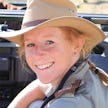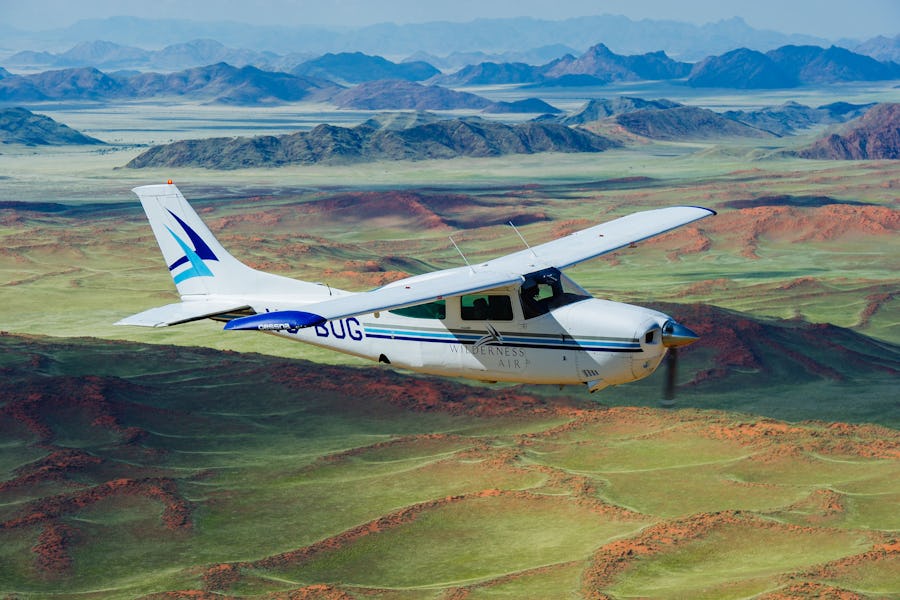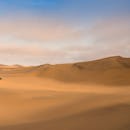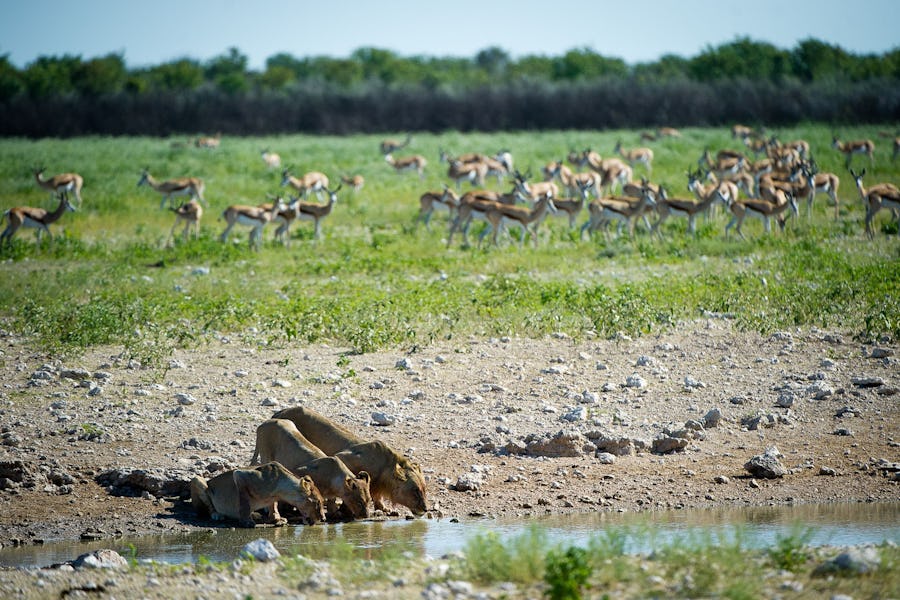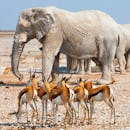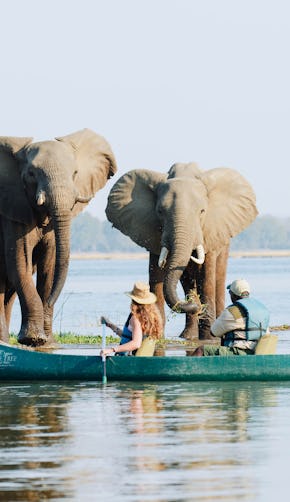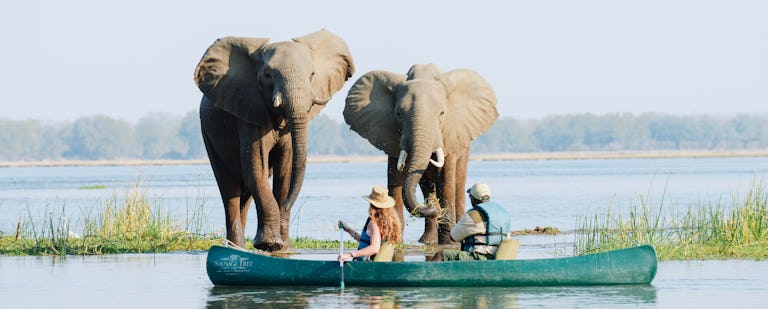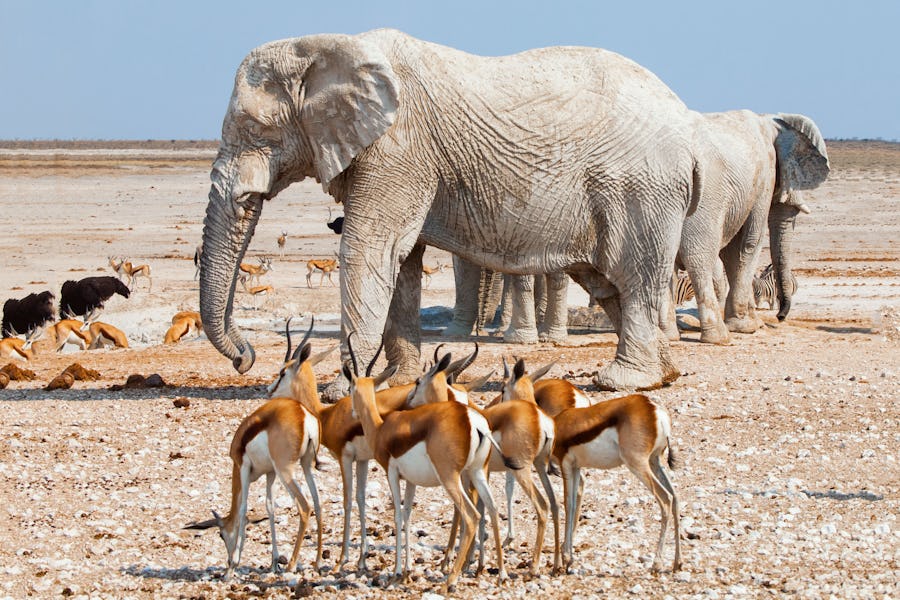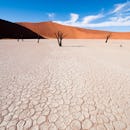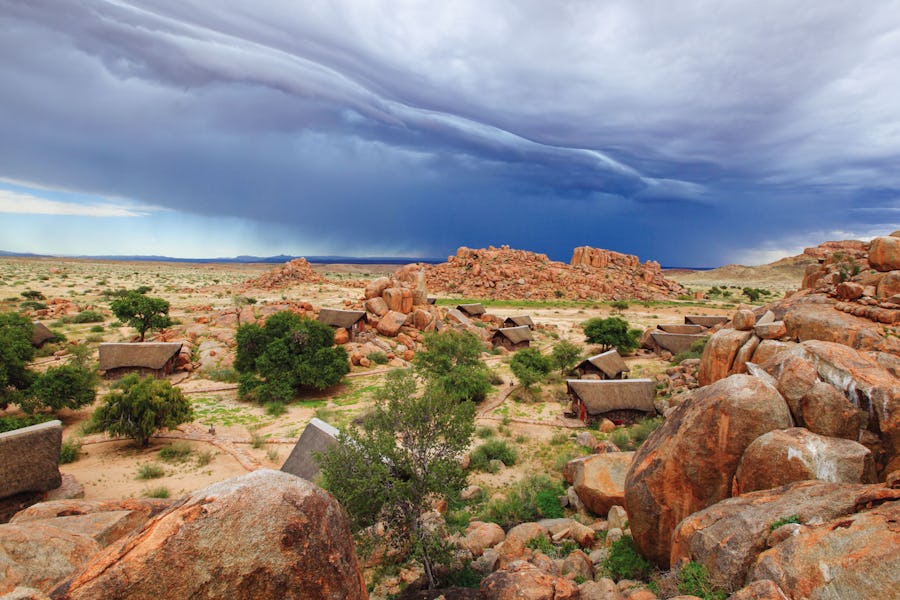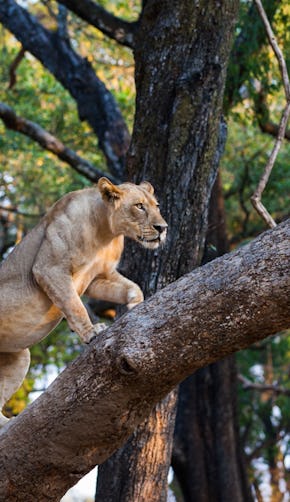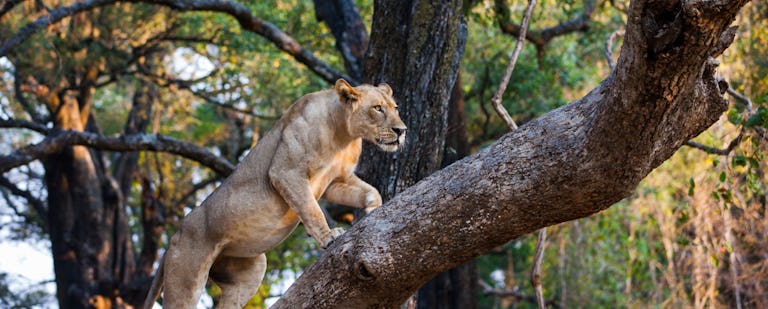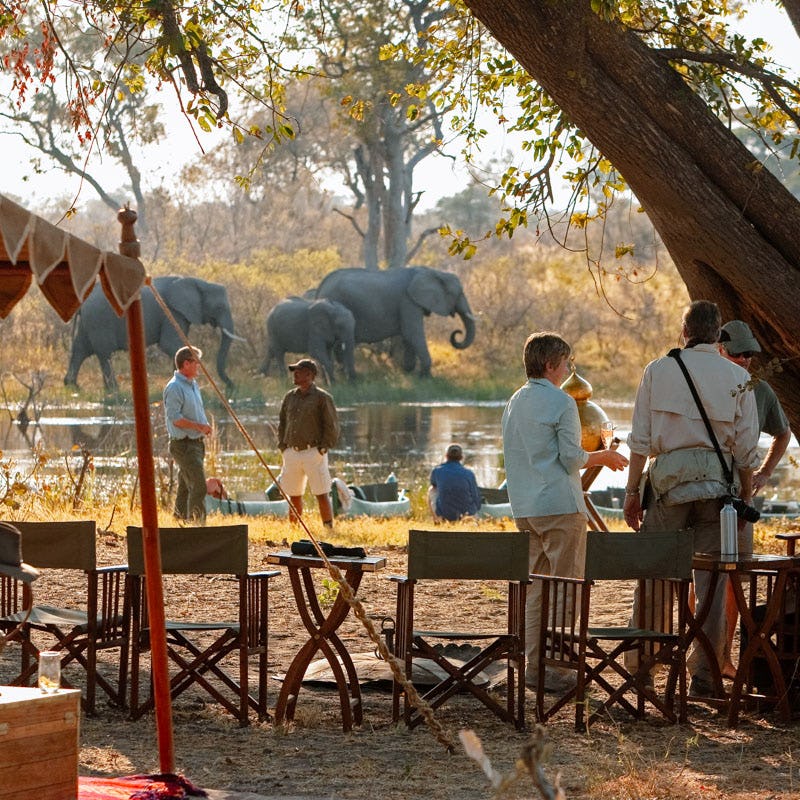Our favourite apricot-coloured, sand-dune filled country, Namibia is located in the south-west corner of the continent and is partially covered by the Namib Desert. It follows roughly the same weather pattern as the southern African ‘safari countries’ but receives decidedly less rain, making it (almost) one of those elusive, year-round destinations. But, as ever, each season has its own quirks and contrasts, and if you’re trying to decide when the best time to visit Namibia is, read on…
December to March
The country receives most rainfall from December to March, but it’s not a drizzly, British sort of rain – these are short, sharp storms that are over pretty quickly, allowing you to get back to your game-viewing. And if you’re looking for something a bit different, it’s the best time to visit Namibia. Birdwatching in the Caprivi is fantastic, and in Kaokoland, the Kunene River floods making for great game viewing by boat. In Sossusvlei and the NamibRand, the desert plains are transformed into green, grassy blankets, attracting herbivores from near and far.
The high temperatures send many flocking to the coast, particularly Swakopmund, between December and March. It might not be the best time to visit Namibia’s quaint coastal town if you’re looking for some peace and quiet, but the colonies of flamingo at the lagoons and the dreamy temperatures might just make up for it. It’s also one of the best times to visit Namibia for a Skeleton Coast flying safari. Surprisingly, the mornings aren’t as foggy as the winter months, the evenings are warmer and the rain clears the air.
April and May
And then we come to April and May, the ‘shoulder season’ months when it’s not too hot, not too cold, and you’ll get the best of the dry and the green seasons. Etosha is glossy, green and grassy and the desert dunes may still have a sprinkling of foliage and wild flowers, depending on the rains. The air is fresh and the sky is blue and many say that Namibia is most beautiful at this time of year.
June to October
If it’s wildlife you’re looking for, put the months of June to October in your diary now. These winter months are the best time to visit Namibia’s animal hotspot, Etosha National Park. The bush is drying out after the wetter months and animals begin to congregate in their hundreds around the waterholes. It’s a truly remarkable spectacle that only gets better as the season progresses and the land gets drier.
The winter months aren’t just the best time to visit Etosha either – it’s a pretty good time to experience most of Namibia’s bucket-list marvels. The skyscraper dunes of Sossusvlei are in their most iconic, blood-red state, contrasted beautifully by cobalt-blue skies; the star-gazing in the desert is unrivalled; and up in Damaraland, you’ll find desert-adapted elephant picking their way across the riverbeds to the last remnants of water. This is also a great time of year for self-drive safaris, as pretty much everywhere is accessible.
Temperature-wise, the coldest of these winter months are June and July, and although it’s wonderfully warm during the day, mornings and evenings can be icy – just remember to pack a jacket to keep you toasty. It gets steadily warmer as the season progresses so if you enjoy the heat, earmark September or October – any later and the humidity starts to build dramatically. If we had to put money on it, we would say September was one of the best times to visit Namibia all-round. Perfect temperatures, excellent wildlife-watching, and it’s no longer the school holidays!
November and December
Throughout November and December, the temperature will steadily rise (as will the humidity) and at some point, the first rains of the season will fall. If you’re lucky enough to experience them, we guarantee you’ll never forget the experience; electric storms crackle across the desert and the sunsets are stormy and very special. It’s an exciting but unpredictable time to visit Namibia, and we would still recommend game drives in Etosha, self-drive and flying safaris – and what a way to spend Christmas!
And one last piece of advice for any Namibia trip: If there’s one thing we know about the desert, it’s that temperatures can change dramatically, with very little notice. Wake up in the morning to fog and some rather chilly temperatures, and in a few short hours, you’ll be looking for a t-shirt and the nearest bottle of sunscreen faster than you can say, ‘It’s hot.’ So, whatever time of year you travel, be prepared; pack layers, remember a hat and sunglasses, and a warm jacket and you won’t go far wrong. Here’s our Namibia packing list.





